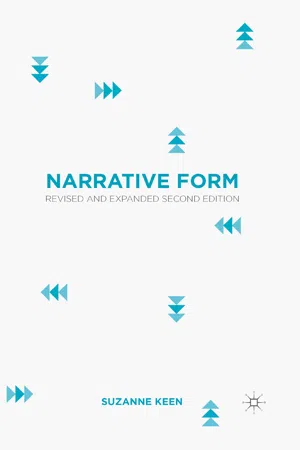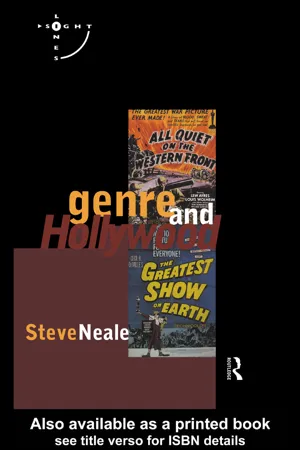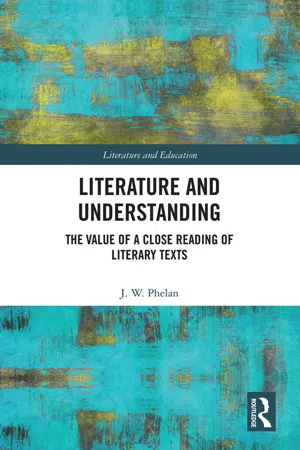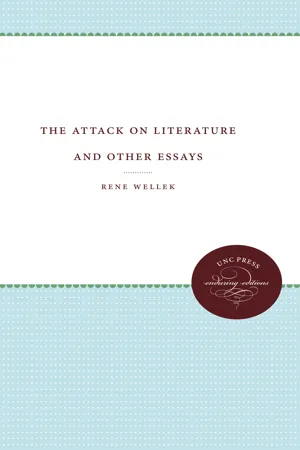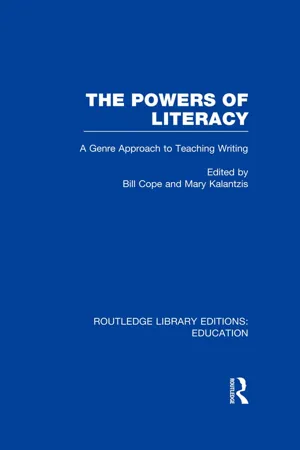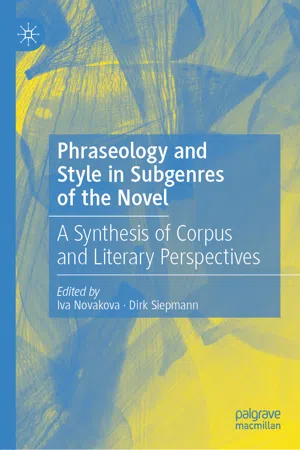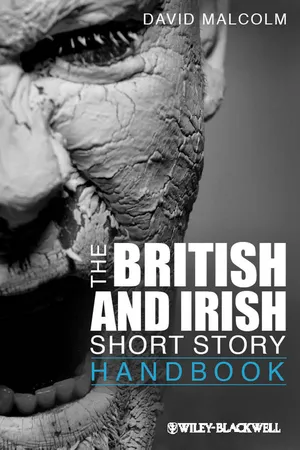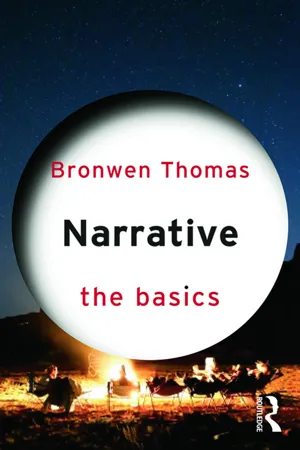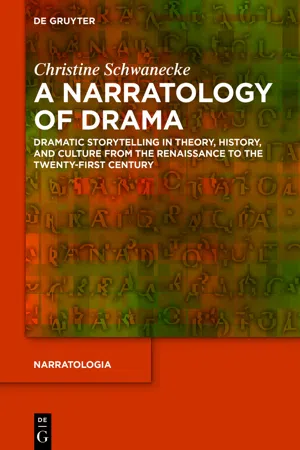Literature
Genre Fiction
Genre fiction refers to works of fiction that fit into specific categories or genres, such as mystery, romance, science fiction, fantasy, and horror. These genres have distinct conventions and tropes that help readers identify and enjoy the particular type of story they are looking for. While genre fiction is often seen as distinct from literary fiction, it can still offer complex characters, compelling themes, and thought-provoking narratives.
Written by Perlego with AI-assistance
Related key terms
12 Key excerpts on "Genre Fiction"
- eBook - ePub
Narrative Form
Revised and Expanded Second Edition
- Suzanne Keen(Author)
- 2015(Publication Date)
- Palgrave Macmillan(Publisher)
3 That is, a genre means the name by which we recognize a group of texts dynamically linked through shared formal, stylistic, and thematic features. Typically, a genre persists through more than one literary period, though a period may be characterized by the efflorescence of a particular genre or related kinds. A single writer may be seen, in hindsight, to have inaugurated a genre, but to become a full-fledged genre, the cluster of qualities must appear in texts by different authors. Though genres overlap with one another in various different ways, through historical developments, shared techniques, and as a result of thematic similarities, they are often perceived as articulating ‘boundaries’ between those of their group and those of another grouping (the sets vary according to the system of generic classification in use). While these very systems of classification may appear to impose from above artificial separations into classes or families whose differences define them, genre as it operates within and among texts often invokes metaphors of boundary, border regions, and the notion of crossing over from one literary realm to another. This aspect of genre is explored below.Genre in narrative fiction can be conceived as a list of what are variously known as types, kinds, or subgenres. From among these synonyms the advanced student can select a term to indicate subdivisions of narrative; none of them is without drawbacks. Kind, a venerable term with roots in Renaissance genre taxonomies, can sound casual or breezy to a contemporary reader. Type carries an implication of typicality that a student may not intend. The term subgenre, my own choice, unfortunately suggests lowness in a hierarchy, but it has the advantage of containing the word ‘genre’ within it, which helps avoid confusion. Narrative subgenres include: adventure; allegory; ballad; Bildungsroman; comic novel; detective fiction; dime novel; domestic fiction; epic; fable; fairy tale; fanfiction; fantasy; fictional autobiography; gothic; historical fiction; horror story; industrial novel; metafiction; multi-plot novel; mystery; naturalist novel; novel of ideas; parable; postmodern novel; pulp fiction; realistic fiction; romance; satire; short story; science fiction; social problem novel; thriller.Telling these subgenres apart depends on recognizing the sort of plot lines, character types, settings, time periods, tones, broad themes, and a number of other particular conventions shared by works bearing their labels. Gérard Genette cautiously observes, ‘The properly (sub)generic categories are apparently always connected to thematic specifications. But that question requires closer examination’ (Architext - eBook - ePub
- Steve Neale(Author)
- 2005(Publication Date)
- Routledge(Publisher)
Fiction and the Fiction Industry:Another feature of the increasingly ‘packaged’ nature of all fiction—including the quality novel—is the advance of ‘genre’ or the categorised product. By ‘genre’ is meant such forms as Science Fiction, the detective novel, Gothic, etc….Genre incorporates a high ration of familiar to strange elements. Habitually it eliminates the bewilderment associated with avant garde and experimentalism. It specialises in books without shock. If, as Ezra Pound says, the modernist's motto is ‘make it new’ then the genre author's motto is ‘make it the same’… Genre Fiction is, characteristically, convention-governed… There is a soothing quality to much Genre Fiction; a high incidence of what Q.D. Leavis calls ‘living at the novelist's expense’… generally the material is bland, despite its claims to unbearable excitement. Similarly genre may have a superficially impressive specialised knowledge… But in the end there will be nothing to task the reader's capacities.(Sutherland 1978 :192-4. For a very different view, see Bloom 1996 .)It will be readily apparent that those writing on Hollywood's genres in the 1960s and 1970s decisively rejected—indeed often symmetrically inverted—the values and judgement evident in a passage like this. McArthur, for instance, argues that genre conventions can play a positive role in curbing authorial ‘excess and selfindulgence’ (1972:94). However, the point to emphasize here is that they share its definitions and its terms, and that these definitions and terms, along with the values and judgements of someone like Sutherland, have a distinct and particular history. As Kress and Threadgold have pointed out:Genre is valorised very differently in different contexts. From the Romantics through modernism to postmodernism, genre - Noël Carroll, John Gibson, Noël Carroll, John Gibson(Authors)
- 2015(Publication Date)
- Routledge(Publisher)
It is plausible that this is part of the explanation for our interest in popular fiction. But perhaps we can provide an alternative solution to the paradox by pointing to an ambiguity in Carroll’s articulation of it. Although it is true that ordinary readers consume popular fictions for the sake of their stories, this is best understood as an interest in individual stories; that is, story tokens; that is, an interest in how individual stories will turn out. On the other hand, ordinary knowledge of stories is a matter of knowing story types; that is, general knowledge about kinds of stories. But general knowledge about kinds of stories (e.g. knowledge that the mystery will be solved or that the couple will be happily united) does not entail detailed knowledge of individual stories (e.g. who committed the crime, how the couple will be reunited). If this is right, then the argument is defused since (3) is plausible only if “story” is understood unambiguously.Genre and Popular Fiction
The vast majority of works of popular fiction fall into recognizable genres such as romance, science fiction, horror, mystery, fantasy, or the western, but it is not clear that they must do so unless one assumes that all fiction falls into such a genre. Since fiction itself may count as a genre (see Friend 2012 ), and popular fiction itself has a claim to count as one too, every work of popular fiction may trivially fall into some genre. The question is whether they must also fall into some genre non-trivially. (And, at least for the sake of argument, we shall exclude literary forms such as the novel and short story from counting as genres.) I do not believe so, though it is difficult to offer cases since there is a strong tendency to place works of popular fiction in some genre or other. (Perhaps Alice Sebold’s 2002 novel, The Lovely Bones, is worth considering here – it is popular fiction but does not seem to fall straightforwardly into any genre although it contains elements of several.) But even if it were the case that all extant popular fiction is Genre Fiction, this is not a matter of necessity. Writing in recognized genres is merely a standard means by which authors of popular fictions aim for accessibility and a wide readership.More straightforwardly, not all works of Genre Fiction fall into the category of the popular. Italo Calvino’s short stories from Cosmicomics- eBook - ePub
Literature and Understanding
The Value of a Close Reading of Literary Texts
- Jon Phelan(Author)
- 2020(Publication Date)
- Routledge(Publisher)
Literary fiction as a subgenre of both literature and fictionThere is a tendency in the philosophy of literature, less conspicuous in the philosophy of fiction, to use the terms ‘literature’ and ‘fiction’ interchangeably. Yet the terms appear to track an important distinction; one recognised by publishers, librarians, booksellers and any reader who expects a different kind of read from the shelf marked ‘literature’ than from the shelf marked ‘fiction’.1 The problem is that in running the concepts ‘literature’ and ‘fiction’ together, no distinction is drawn between arguments that are sound only if the concept ‘literature’ is employed and arguments that are sound only if the concept ‘fiction’ is employed. As a result, the conclusions of such arguments are taken to apply indiscriminately to both literature and fiction, to the potential detriment of both. Some work needs to be done in order to determine what the conceptual relations are between literature, fiction and literary fiction. Once this is in place I can investigate the claim that the cognitive gain from reading literary fiction is generated from a reader’s engagement with literary fiction qua literature and not, as is too often assumed, qua fiction.There is a tradition that takes all literature to be fictional by definition. This view is summarised by Tzvetan Todorov when he says that literature is ‘imitation through language’ and as all imitation is not real but fictional then ‘literature is fiction’ (Todorov 1973: 7 italics in original). It is not clear, however, why we should join this tradition given that many works read and admired as literature are not fictional. Works admired for their literary qualities but which are not fictions include: Descartes’ Meditations, Gibbon’s Decline and Fall of the Roman Empire, some of George Orwell’s essays, and The Song of Solomon. Some works considered ‘literary’ include works based on fact which are fictionalised in their presentation such as Arthur Miller’s The Crucible - eBook - ePub
- Rene Wellek(Author)
- 2018(Publication Date)
- The University of North Carolina Press(Publisher)
There are no doubt borderline cases and within the subgenres distinctions of quality can be made. We can grade detective stories, science fiction, Gothic romances, Westerns, even pornography, and any other current genre by aesthetic, social, and moral criteria. There was and is a constant interchange between high literature and “subliterature.” High literary forms descend to popular forms; for instance, chivalrous romances were transformed into chapbooks, and upperclass literature has often been in need of “rebarbarization.” The impact of folksong and folk ballad at the end of the eighteenth century is an obvious example, but it can also be argued that, for instance, Dostoevsky lifted the French sensational novel into the higher realm of supreme fiction. E. D. Hirsch’s definition of literature as “including any text worthy to be taught to students by teachers of literature” 6 either begs the question in the word “worthy” or seems to endorse the practice of even reputable American universities where Tarzan, The Wizard of Oz, Mickey Spillane’s The Big Kill, and the Story of O. are included in literature courses. We cannot get around the question of quality, which is the central question of criticism. If we define literature as imaginative literature, poems, plays, and novels, we are faced with the problem of how to distinguish it from literature in the wider sense. It has been answered substantially in two ways: literature is fiction or literature uses language in a special way. In Theory of Literature, I have tried to combine the two answers and have been criticized since, especially by Bennison Gray, for embracing two incompatible definitions. “Fictionality” is a new term for the difference between art and life, for a recognition of art as make-believe. Fiction means a denial of a truth of immediate correspondence with reality. Fiction tries to build a world of illusion and does so by distancing, by framing - eBook - ePub
The Powers of Literacy (RLE Edu I)
A Genre Approach to Teaching Writing
- Bill Cope, Mary Kalantzis, Bill Cope, Mary Kalantzis(Authors)
- 2014(Publication Date)
- Routledge(Publisher)
The Left Hand of Darkness , the book from which this passage is taken, is not just about a planet ‘far far away’; it is also, crucially, about this planet and this (twentieth century Western) society. As human Ambassador Genly Ai struggles to deal with his Gethenian hosts, the prejudices and opinions, behaviours and attitudes of a patriarchal man and the society from which he comes are exposed and examined. LeGuin‘s science fiction novel is a site for the critical deconstruction of contemporary society and for the reconstruction of gender discourses and gender identities.This chapter discusses the ways in which the reading and writing of feminist Genre Fiction, such as science fiction, offer a model of a critical methodology which can be used by teachers in the development of an empowering pedagogy, a critical literacy.Genre as a Critical Category
The first points to consider in relation to this aim are the choice of ‘genre’ fiction as a model and the meaning of the term ‘genre’ in this context. After all, all texts are generic; they are all constructed and read in relation to usually one dominant accepted literary (or non-literary) category. They may diverge from the conservative functioning of that genre, perhaps through a mixing of different genres in the one text, but they nevertheless can be identified and made meaning of by their relationship(s) with one or more genres. Here we might be talking of the realism of Henry James or the fantasy of Marion Zimmer Bradley, the modernism of James Joyce or Sara Paretsky‘s detective adventures of V.l. Warshawski, or the postmodern pyrotechnics of Calvino or Pynchon. It is important to address this notion of ‘genre’ because the critical, deconstructive practice developed by feminist readers and writers began in their analysis of this term as a pejorative and dismissive label for many kinds of writing.The word ‘genre’ came to be a pejorative label for literature in the late eighteenth and early nineteenth century. Before this, during the period of the Enlightenment and earlier, ‘generic’ was a positive term; good fiction was fiction that followed and improved on its dominant generic predecessor(s). When the romantics turned rationalism on its head, there was a revaluation of the term and of the aesthetic which accompanied it as a classificatory label. For the romantics and after, great literature was non-generic. It was individual, creative, inspired. The terms ‘generic’ and ‘creative’ were seen as opposites, not as complementary, as they had been before romanticism. Of course, the interesting thing for us as scholars now is that it is very easy to identify a romantic poem (or a painting and so on). Consider this ‘emotion recollected in tranquillity’: - eBook - ePub
Phraseology and Style in Subgenres of the Novel
A Synthesis of Corpus and Literary Perspectives
- Iva Novakova, Dirk Siepmann, Iva Novakova, Dirk Siepmann(Authors)
- 2019(Publication Date)
- Palgrave Macmillan(Publisher)
fantasy is supposed to accept magic and supernatural events as factual. The reader must therefore trust the writer’s fiction as a valid experience.For this type of analysis, linguistic and stylistic criteria seem to be somewhat secondary despite the fact that lexical creativity is really important in both of these genres. Obviously, science fiction novels are expected to resort much more to scientific expressions, while fantasy novels are more likely to draw from mythical and historical references (medieval ones, for example, in heroic fantasy ). Hence, thematic elements could really be discriminative here and some lexical studies (Eco 1979 ; Saint-Gelais 1999 , see also Chapter 6 by Gonon and Kraif in this volume) show more precisely which xenoencyclopedia is used in each case.We assume here that our phraseological approach will allow us to go beyond a lexical study by highlighting recurrent RLTs specific to several different novels of the same genre.In the course of our semantic annotation, several important categories emerged as specific to fantasy or science fiction . Therefore, we can draw a distinction between results that we called generic markers and other results that were less expected than those.4.1 Generic Markers
Because they belong to popular fiction, science fiction and especially fantasy are often considered as more stereotypical than what is normally understood by literary fiction . Stereotyped structure and form are frequently associated with popular novels. They are considered to be part of “successful recipes”, and it would probably be interesting to discuss these stereotypical ideas and expressions given the importance ascribed to building a reader’s encyclopedia (see, for example, Baroni on crime novels, 2003 - eBook - ePub
- David Malcolm(Author)
- 2012(Publication Date)
- Wiley-Blackwell(Publisher)
Part 3 GenresThis part considers the range of major genres current in the British and Irish short story from the 1880s through to the present. It attempts to give an overview of the genre preferences of British and Irish short-story writers during that period. It concentrates on genres that are substantial in terms of numbers of texts and status. Thus, espionage short fiction exists (for example, Maugham's Ashenden stories (1928), and Michael Moorcock's Jerry Cornelius tales (from the mid-1960s through to the 1980s), but espionage short fiction is finally a very minor type of short story (although it is important as a genre of the novel), and will be mentioned only in passing here.In Part 2, I have discussed whether one can call the short story a genre. My conclusion is that it cannot be so called, being too large a category of text, and embracing, itself, a wide range of disparate traditional genres. In this part, genre is understood as a category of text, widely recognized by writers and readers (and publishers and bookstore proprietors), and having objectively verifiable markers. These markers may take any shape. In genres of prose fiction, they are usually characters, settings, kinds of action, and explicit thematic concerns. Each text offers a set of signs that informs the reader as to what kind of text he/she is dealing with, and what the appropriate expectations and pleasures are for that text. Not every text, of course, will manifest all the markers of its particular genre, but will be selective and configure them uniquely.However, it must be stressed that genres are never fixed, but they evolve and develop. Writers choose different kinds of character, new settings, and innovative twists of events in order to keep their text fresh and alive, while all the time staying in touch with the basic contemporary matrix of the genre. Over time, genres may develop in quite radical ways, so that what one means by a specific genre at one moment may be very different after a hundred years, or less. However, the steps of development should be observable to the literary historian. In addition, it is important to note that few (if any) examples of any one genre are pure in terms of genre. Any individual text is likely to be polyvalent with respect to genre, and to show features of other genres. Sometimes this is of no more than passing interest – the other genre is fleetingly alluded to, or is in any case very close to the text's dominant genre in its markers. In other cases, there is a radical mixing of widely differing genres. This is semantically very heavily loaded, and the recognition of such genre concatenation is very important in the analysis and interpretation of the text in question. - eBook - ePub
- Bronwen Thomas(Author)
- 2015(Publication Date)
- Routledge(Publisher)
Narrative and Genre‘There is no genreless text.’ (Derrida 1990[1980]: 61)Why Study Genre?
Genre, from the French meaning ‘type’ or ‘kind’, is a way of classifying phenomena based on shared properties or qualities. With regard to narrative, the attempt to categorise ways of telling stories may be traced back to classical antiquity and persists into the present day: in most stores books, music and videogames are arranged by genre, while television schedules have clearly defined time slots for certain types of programming. A focus on genre means going beyond the confines of the individual text, allowing us to identify patterns and relations existing across texts and across media platforms. It can also help to provide a historical context for narrative and demonstrate how texts are used by readers, including the social impact they may have in both reflecting and shaping cultural norms and values.Resistance to classification and fixed categories has arguably always existed in the form of parody or pastiche. However, subverting, unsettling and blurring genre boundaries has come to be a key characteristic of the postmodern, self-consciously foregrounding and playing with genre conventions to produce complex, hybrid new forms that often defy definition and that blur the boundaries between fact and fiction. At the same time, genre theory has moved beyond formalistic classification to understand the social function of genres and the role played by readers and audiences in ensuring their relevance and popularity.In the field of literature, ‘Genre Fiction’ is often used as a pejorative term, with the distinction between this kind of writing and the literary classics being constantly upheld and redefined by bookshops, publishers, literary prizes and so on. As a result, discussion of genre is often absent from narrative studies, focusing as it does largely on canonical literary texts. In film studies, too, genre has been perceived as something which stifles creativity, limiting the free play of meanings (Altman 1984). Studies of genre in film are perceived negatively as focusing only on texts that have parallels in literature (Neale 2008) and are associated with the worst excesses of structuralism and formalism in their preoccupation with categorisation for categorisation’s sake. In one of the few studies to focus specifically on narrative and - eBook - ePub
- Gary Burns, Gary Burns(Authors)
- 2016(Publication Date)
- Wiley-Blackwell(Publisher)
Thus, a wagon train traveling across a desert setting in the mid-1800s, encountering various obstacles and hazards in an attempt to reach the Pacific coast, ultimately arriving successfully to a new life and a promise of future prosperity for a family in the wagon train – this can be called a sub-formula of the Western genre. The dead body found in a locked room of a country mansion in England and investigated by a brilliant amateur sleuth who, following her diligent inquiries into the nature of the murder, the circumstances surrounding the murder, and those who may have had a motive and access to the murder victim, and following a system of logical deduction apparently unknown to the local police, assembles the potential culprits and reveals the murderer to all – this can be called the detective story. When a number of topic-related sub-formulas are collected together, this collection may be identified as a “formula.” The pioneer sub-formula, along with the gunfighter sub-formula and the railroad sub-formula (among a number of others) are collectively known as the Western formula. The amateur detective sub-formula, the private investigator sub-formula, and the police detective sub-formula (also among a number of others) are collectively known as the detective formula.When a group of related narrative formulas are assembled, these formulas may be classified as a “genre,” the largest classification unit in popular fiction. There are only a handful of genres in popular fiction, which can include the horror genre, the crime genre, the romance genre, the science-fiction genre, the fantasy genre, and the adventure genre. The Western formula is housed within the adventure genre, while the detective formula can be found in the crime genre. Other forms of literary narrative, such as melodrama, are part of the larger assemblage of prose fiction, but they typically are not classified as popular fiction. This explanation of the various structures to be found in popular fiction can readily apply to those types of story that are easily identifiable, such as the Western or the detective story, but it also can detail how the writer of popular fiction – with a nearly endless selection of literary motifs before him or her – can create stories that cross boundaries, as often found in the Western detective story (an example is Craig Johnson’s “Longmire” series).Arguably, the first expression of popular fiction may be found in the “story papers” during the early decades of the nineteenth century. “The early 1800s saw the emergence of story papers,” explains author Tim DeForest in his book Storytelling in the Pulps, Comics, and Radio: How Technology Changed Popular Fiction in America (13). DeForest goes on to note:These were four- to eight-page tabloids with names like New York Ledger or Saturday Night - eBook - ePub
- Rick Altman(Author)
- 2019(Publication Date)
- British Film Institute(Publisher)
In short, film genre study has over the last two decades established itself as a field separate from literary genre study. As such, it has developed its own assumptions, its own modus operandi, and its own objects of study. This chapter will be devoted to a sketch of recent approaches to film genre. This overview is based primarily on book-length studies of major genres, along with particularly influential articles. The positions described are not necessarily the ones touted on book jackets or in theoretical introductions, however, but derive from the actual praxis of current genre study, i.e., the theory that emerges from the practice of genre criticism and history. I do not agree with all the methods or conclusions presented in this chapter. Indeed, the rest of this book will offer alternatives to many of the positions presented. Nevertheless, it is important for readers to understand the classical tradition of film genre studies as a basic context for the proposals that will be made in subsequent chapters. For this reason, the following ten claims have been presented in as straightforward a manner as possible, with little attempt to present variant positions or to criticize potentially problematic stands and strategies. Genre is a useful category, because it bridges multiple concerns Comic books are full of contraptions capable of performing multiple tasks. Genre is usually seen as just such a device. Only slightly short of magical in its versatility, genre endures within film theory because of its ability to perform multiple operations simultaneously. According to most critics, genres provide the formulas that drive production; genres constitute the structures that define individual texts; programming decisions are based primarily on generic criteria; the interpretation of generic films depends directly on the audience’s generic expectations - eBook - ePub
A Narratology of Drama
Dramatic Storytelling in Theory, History, and Culture from the Renaissance to the Twenty-First Century
- Christine Schwanecke(Author)
- 2022(Publication Date)
- De Gruyter(Publisher)
Genette 2000 [1979] , 213).Secondly, genres are inherently contradictory: On the one hand, a genre follows relatively fixed sets of conventions that constitute its repertoire. These basic generic rules fulfil important communicative functions: They are essential for literary communication to succeed. Authors are aware of generic principles – of a drama or a poem, a murder mystery, a Western, a soap opera, or a tragedy – and adhere to them (or deviate from them), while recipients expect them (or interpret any deviation from or variation on them). On the other hand, genres change and evolve. Tied to the historical and cultural circumstances under which they emerge and subject to changes within the system of genres, they change in response to their times and to other genres. The definitions and realisations of genres may also vary from cultural context to cultural context. As Heta Pyrhönen (2007 , 119) puts it, “As historical phenomena, genres are subject to changes and modifications, even extinction.” The medieval liturgical play, for instance, not only radically differs in its content and possible functions from a nineteenth-century drawing-room comedy or a twentieth-century farce; it is nowadays not even written or produced at all.14Thirdly, genres are unbelievably complex. Marion Gymnich and Birgit Neumann (cf. 2007 , 35) have come to terms with this complexity by differentiating four interrelated levels that make up the ‘compound term’ genre. There is (a) the level of the individual text or texts with its or their intra-textual characteristics, e.g., specific form and content (Gymnich and Neumann 2007 , 36–38). There is (b) the cultural and historical level (in its synchronic and diachronic dimension) to which the respective text is tied – for instance, produced, stored, canonised, and/or received in (Gymnich and Neumann 2007 , 38–45). There is (c) the cognitive level, referring to individuals’ actualisations of a text, in which they construct generic and textual meaning (Gymnich and Neumann 2007 , 45–46). And there is (d) the level of possible and potential functions (Gymnich and Neumann 2007 , 47–48), i.e., effects and syntheses that respond to special historical requirements and expectations of historical producers and recipients. Those potential functions may concern the (system of) genres and texts themselves, or they may be extra-textual and contextual. While all levels are in dialogue with each other, level (d) can be regarded as a super-ordinate level, on which all other levels are synthesised (cf. Gymnich and Neumann 2007
Index pages curate the most relevant extracts from our library of academic textbooks. They’ve been created using an in-house natural language model (NLM), each adding context and meaning to key research topics.
